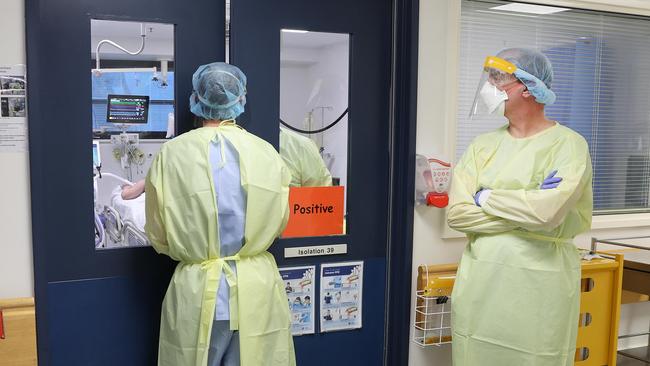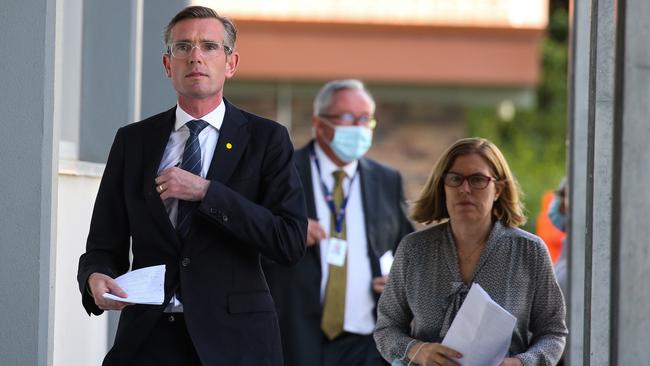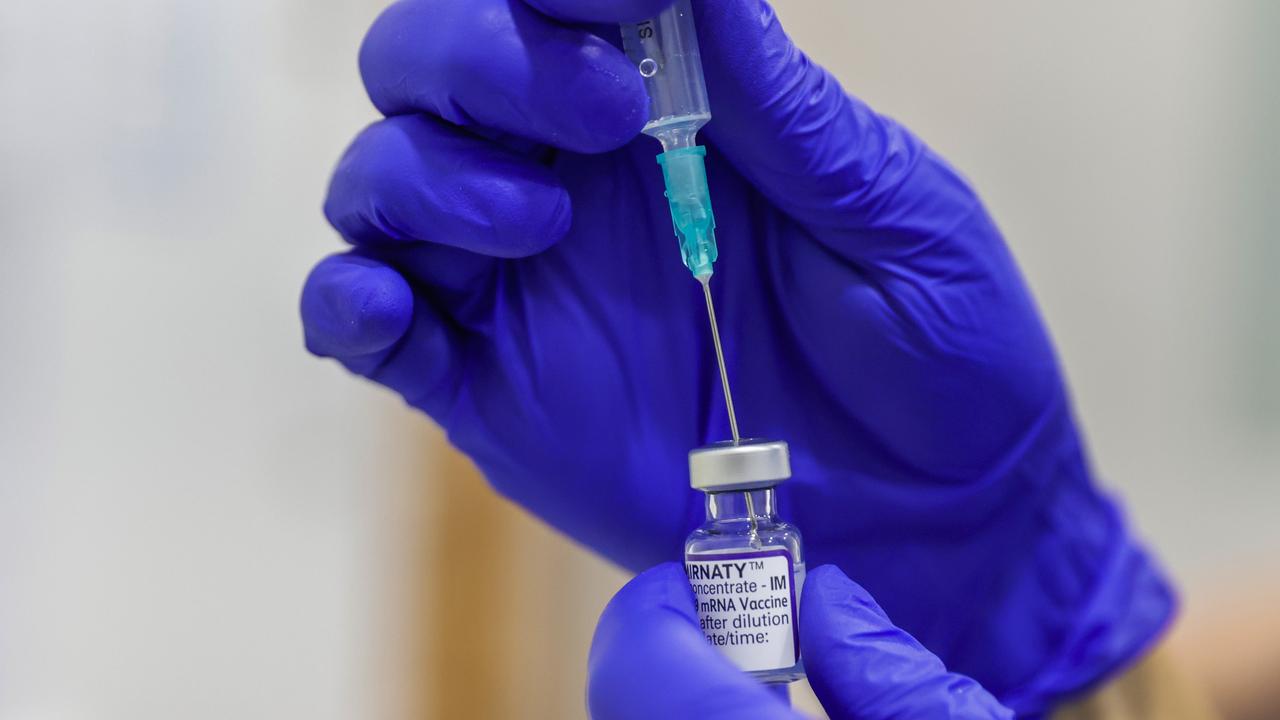NSW hospital Covid ICU rates below ‘best cast scenario’ modelling amid Omicron wave
The Omicron wave has not had the expected toll on the state’s hospital system with ICU rates well below the “best case scenario”.
NSW Coronavirus News
Don't miss out on the headlines from NSW Coronavirus News. Followed categories will be added to My News.
The number of people in intensive care with Covid is remaining stable, well below numbers modelled by the NSW Government for even the “best case scenario” during the Omicron wave.
There were 186 people in ICU with Covid on Tuesday, up one from the day before.
The relatively stable ICU rates, and similarly stable rates of hospitalisation, have led to the government restarting some non-urgent elective surgery in private and regional hospitals.
Health Minister Brad Hazzard said the resumption of elective surgery was made possible because the Omicron wave had not had the expected toll on the State’s hospital system.

“Fortunately, we have seen the numbers of Covid patients going into our hospital not get anywhere near, in fact, what we thought might be the best case scenario,” he said.
“I’m sorry that some people have obviously had to have their surgery delayed but it was in your interests, it was in the interests of the entire community.”
NSW has an ICU capacity of 1,000 beds. Premier Dominic Perrottet has consistently said that current rates of hospitalisation and ICU admissions are far lower than what was expected during the Omicron outbreak.

However, it will take “a little longer” before non-urgent elective surgery resumes in metropolitan public hospitals.
“Clearly our desire is to move as quickly as possible in the metropolitan area as well,” Mr Hazzard said.
There were 2,749 people in hospital with Covid on Tuesday.
Thirty people died with the virus in the reporting period, including a double-vaccinated man in his 30s with no significant underlying health conditions. An unvaccinated woman in her 50s also died with Covid-19.
NSW Health reported 12,818 positive tests. There were 4,900 positive PCR results, but PCR testing rates have dropped, with just 36,200 tests processed on Monday.
Meanwhile, Mr Perrottet defended NSW’s position as the worst performing state in the national booster rollout.
As revealed by The Daily Telegraph on Tuesday, NSW is lagging behind all other states and territories when comparing rates of booster shots among people who are eligible.
“We also have one of the highest vaccination rates in the country, which means that there are naturally more people who are eligible,” he said.
Mr Perrottet acknowledged some people may not know that they can get a booster shot four to six weeks after recovering from Covid.





